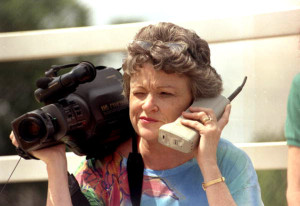It’s no secret that we live in a mobile-first world. Smartphones have transformed the way mobile consumers research and purchase products and services – both online and offline. Within arm’s reach at all times, our smartphones give us instant access to information in our moments of need. We end up searching for information on our mobile devices and choose to shop online, visit a local business, or even call thanks to click-to-call technology.
Mobile search has surpassed desktop due in large part to the convenience smartphones offer. And when the majority of mobile searches have local intent (nearly 80% result in offline purchases), knowing how to maximize your local mobile search strategy becomes especially important.
Here are 5 ways to help you get the most out of your local mobile search:
1. Always Keep Location Top of Mind
When running an AdWords campaign for mobile devices, it’s important to localize your ads. Stay front and center by using geo-targeted ads that will only display to customers within a certain radius of your business. You can even get crafty by using language in your ads with special incentives. They’re a great way to drive prospects to visit or call your nearest location immediately.
Say you’re an auto dealership, for example, and you want to drive prospects to visit or call your nearest dealership location. In addition to running geo-targeted ads, you can optimize them by including location-centric copy and a local number. Local numbers are 3x more likely to get clicked than toll-free numbers. Not only are you showing your mobile audience that your location is nearby, but you’re giving them the option to engage right away by calling.
2. Narrow Down Your Device Bidding
Search marketers now have more control over device targeting and bidding in Google AdWords, as well as access to more data to help optimize ROI. If you’re looking to improve local search, ensure you run device-specific campaigns by selecting mobile as the primary device.
You may want to consider running a separate campaign for desktop since the copy and calls-to-action for mobile local search will be different on desktop, especially if you’re running geo-targeted ads with location or call extensions. And now that you can focus your bid adjustments to mobile devices rather than tablets and desktops, you’ll be able to bid on keywords that drive in-store visits or calls.
3. Try Using Google Call-Only Ads
Call-only ads are very useful for local businesses that rely on calls to close sales. Ensure your Google AdWords bid device is set to mobile – you don’t want these ads to be seen in a desktop user’s search results. Call-only ads should also be scheduled to only run during your business hours when you have employees available to answer calls.
Your ad copy should be very focused on the action you want mobile searches to take. Tell them you want them to “Call Now” or “Call to speak with an agent today.” This makes it easy for people to know they can click on your ad and that they’ll be quickly connected with your business.
4. Use Promoted Pins in Google Maps
Promoted pins in Google Maps is another great way to optimize your local search and create a personalized experience for the mobile searcher. 4 in 5 consumers have local intent when conducting searches on their smartphones.
If you’re running an AdWords campaign targeting mobile device users then your local search ads can display within Google Maps. There are just a few things you need to do before you can get started. Google will need to verify your business and deem you an eligible advertiser. Once that happens, you’ll need to enable “location extensions” within Google AdWords and connect it with your Google My Business account.
If you’re able to use promoted pins, keep in mind that Google will still determine when to promote a pin based on a variety of factors, such as the searcher’s location or browsing behavior. You may have less control, but your promoted pins will have a higher chance of displaying for an audience specifically interested in your product or service.
5. Optimize Your Landing Pages For Local Mobile Search
There’s a chance that a mobile searcher will not visit your store or call your business after seeing your search ad. Instead, they may click on it. You’ll want to direct these visitors to a customized landing page. Use language that speaks to your specific location or the search ad they clicked on. This way the user experience is personalized from start to finish.
Keep in mind how smartphone users convert, either by visiting your store or calling. Less and less convert by web form from their mobile devices. According to BIA/Kelsey, mobile search will drive 73 billion calls in the US by 2018. You should include a prominent “call now” call to action on the landing page to encourage mobile searchers to click-to-call your local business.
The sheer volume of local searches on smartphones and mobile devices cannot be ignored by local marketers. Those ready to track, analyze, and optimize every conversion will be the ones who get more out of their local mobile search and find true ROI.
Digital & Social Articles on Business 2 Community(71)





